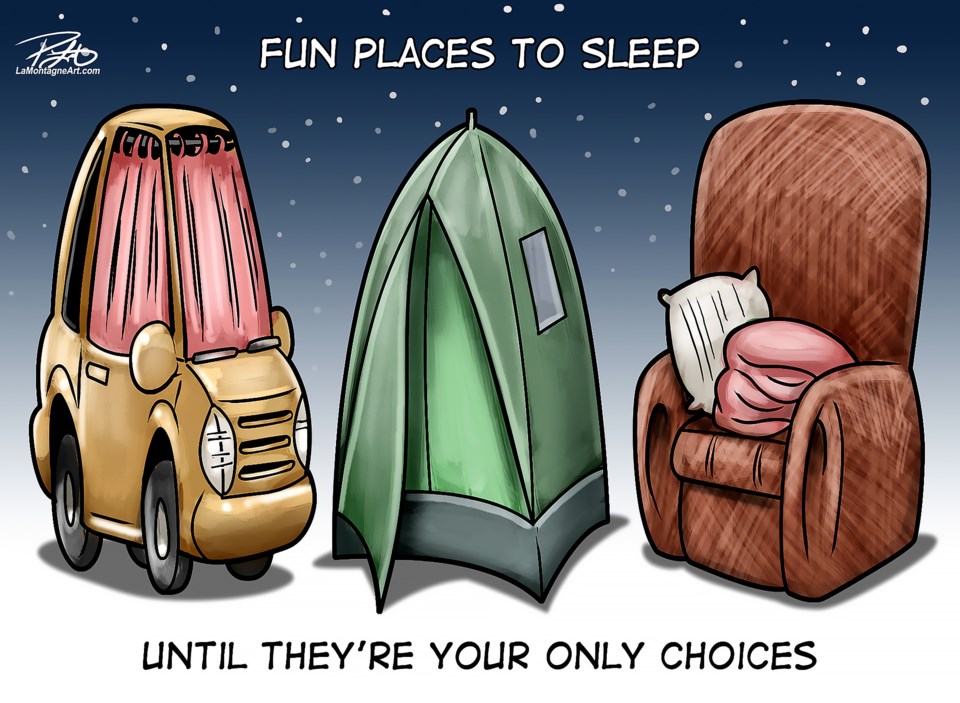Out of sight, out of mind.
That has been largely the goal of dealing with homeless populations throughout the years.
In an area such as the Bow Valley, where affluence is around nearly every corner, it can be even more hidden.
In a population where living in a vehicle can be considered a way of life, the attitude can often be counter-productive to the best interests of people.
Locally, organizations have done what they can – often with limited resources at their disposal.
The Homeless Society of the Bow Valley – formerly known as the Resident Emergency Shelter Temporary (REST) – showed that working through the winter months is vital, but a year-round service is necessary.
The new 33 units of affordable accommodation opened by YWCA Banff quickly filled up and a waiting list ensued as the organization continues to serve needs of numerous residents.
These services are no longer a nice-to-have, but a need-to-have.
The cost of living in the Bow Valley isn’t going away.
In fact, it’s likely only going to get worse and continue to be one of the most expensive places in Canada to live.
Last month, the Alberta Living Wage Network posted the annual salary necessary for individuals and families to live in select communities in the province. In no surprise, Canmore topped the list once again. In a weighted average of a two-parent household with two kids, a single person and a lone parent with one child, an individual needs to make $32.75 an hour.
In the latest Job Resource Centre’s labour market review, a one-bedroom unit in Banff averages $1,757 and Canmore is $1,824. For a two-bedroom unit, Banff is $2,330 and Canmore is $2,733. The Alberta government’s 2022 apartment vacancy and rental cost survey released Dec. 7 showed in rural markets the extreme between Banff and other markets average rental costs.
The survey found the average one-bedroom in a rural area was $817, but in Banff it was $1,850. An average two-bedroom was $932, while it was $3,000 in Banff. It estimated the vacancy rate was about 0.3 per cent. Banff led the list of highest rental costs for one-, two- and four-bedroom units in rural areas in the province.
Programs such as food rescues, affordability services and municipally-run affordable housing aim to scale back as many costs as possible to make life as livable as possible.
Despite notable efforts, the homeless population is still largely hidden in the valley.
It’s not unheard of for homeless people to die of exposure in what can be bitter cold that arrives each year.
Further highlighting the issue, it’s nearly impossible to calculate the number of homeless people per year that die in Canada.
Some larger municipalities are attempting to keep track. From October 2021 to October 2022, advocacy groups in London, Ont. calculated 57 homeless people died and have brought forward an annual service to recognize them. In Hamilton, Ont., a partnership with local shelters and hospitals found at least 29 homeless people died from June 2021 to May 2022.
A CBC report found 247 homeless people died in 2021 in British Columbia – a significant increase from 141 in 2020.
A 2022 Statistics Canada study, Homelessness in Canada, found about three per cent of Canadians are either homeless or have experienced homelessness, but determined it was next to impossible to properly calculate deaths among homeless people from coast to coast.
Regardless of what one may think of those people experiencing homelessness, they remain citizens and residents.
But above all else, they are human beings who are more than just a number on a page or report.
They all have families, memories and lived experiences as much as any other person.
We owe it to them – and society – to help.




